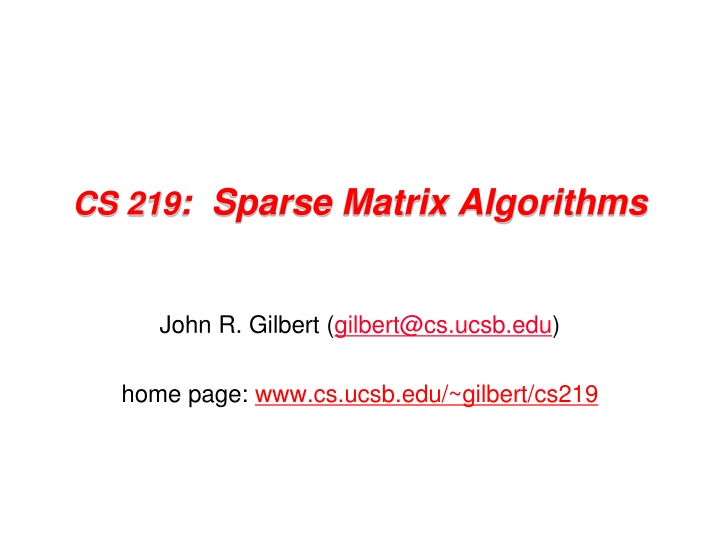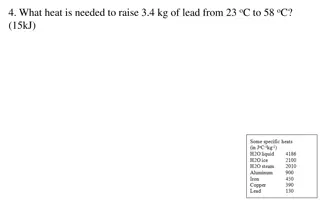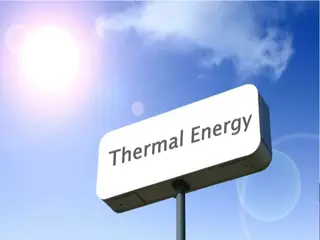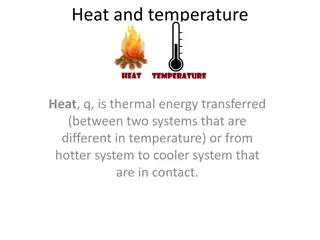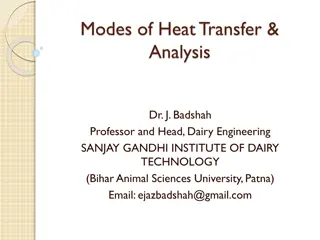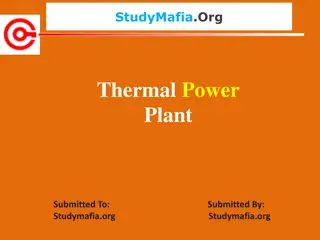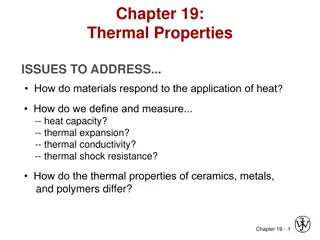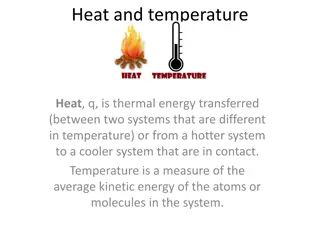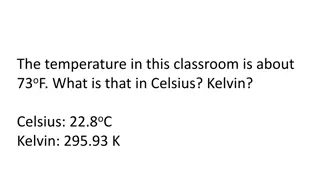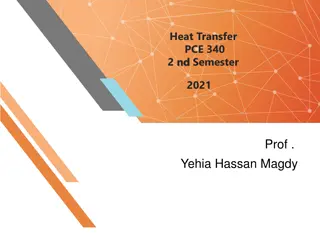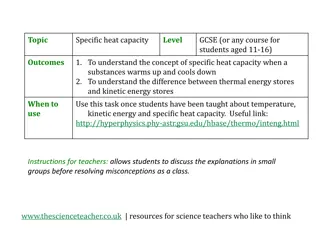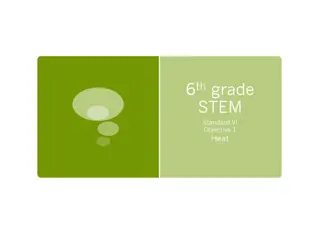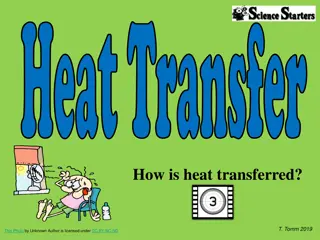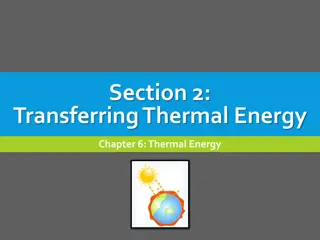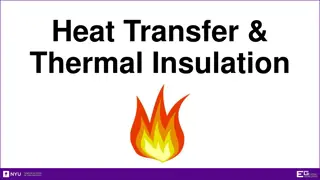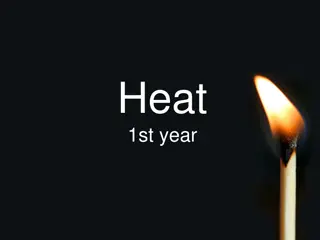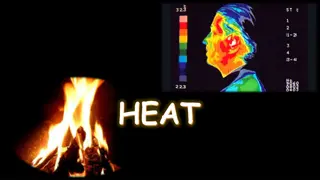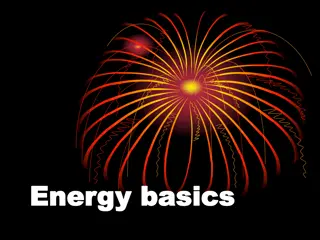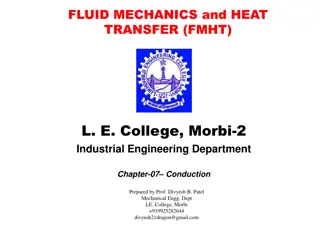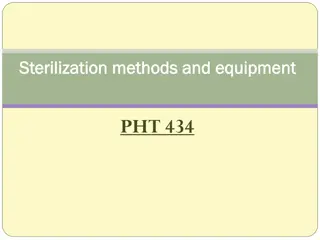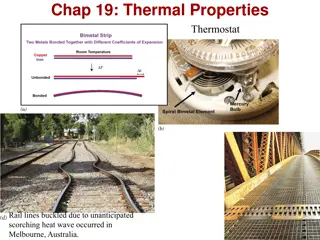Heat and Thermal Energy Transfer
Exploring the principles of heat transfer and thermal energy in Chapter 9, covering states of matter, conduction, convection, radiation, and insulators. Learn about different types of heat transfer methods and materials' thermal properties.
Download Presentation

Please find below an Image/Link to download the presentation.
The content on the website is provided AS IS for your information and personal use only. It may not be sold, licensed, or shared on other websites without obtaining consent from the author.If you encounter any issues during the download, it is possible that the publisher has removed the file from their server.
You are allowed to download the files provided on this website for personal or commercial use, subject to the condition that they are used lawfully. All files are the property of their respective owners.
The content on the website is provided AS IS for your information and personal use only. It may not be sold, licensed, or shared on other websites without obtaining consent from the author.
E N D
Presentation Transcript
CS 219: Sparse Matrix Algorithms John R. Gilbert (gilbert@cs.ucsb.edu) home page: www.cs.ucsb.edu/~gilbert/cs219
Systems of linear equations: Ax = b Eigenvalues and eigenvectors: Aw = w
Systems of linear equations: Ax = b Alice is four years older than Bob. In three years, Alice will be twice Bob s age. How old are Alice and Bob now?
Example: The Temperature Problem A cabin in the snow Wall temperature is 0 , except for a radiator at 100 What is the temperature in the interior?
Example: The Temperature Problem A cabin in the snow (a square region ) Wall temperature is 0 , except for a radiator at 100 What is the temperature in the interior?
Many Physical Models Use Stencil Computations PDE models of heat, fluids, structures, Weather, airplanes, bridges, bones, Game of Life many, many others 6.43
From Stencil Graph to System of Linear Equations Solve Ax = b for x Matrix A, right-hand side vector b, unknown vector x A is sparse: most of the entries are 0
The (2-dimensional) model problem n1/2 Graph is a regular square grid with n = k^2 vertices. Corresponds to matrix for regular 2D finite difference mesh. Gives good intuition for behavior of sparse matrix algorithms on many 2-dimensional physical problems. There s also a 3-dimensional model problem.
Solving Poisson s equation for temperature k = n1/3 For each i from 1 to n, except on the boundaries: x(i-k2) x(i-k) x(i-1) + 6*x(i) x(i+1) x(i+k) x(i+k2) = 0 n equations in n unknowns: A*x = b Each row of A has at most 7 nonzeros.
Definitions The Laplacian matrix of an n-vertex undirected graph G is the n-by-n symmetric matrix A with aij = -1 if i j and (i, j) is an edge of G aij = 0 if i j and (i, j) is not an edge of G aii = the number of edges incident on vertex i Theorem: The Laplacian matrix of G is symmetric, singular, and positive semidefinite. The multiplicity of 0 as an eigenvalue is equal to the number of connected components of G. A generalized Laplacian matrix (more accurately, a symmetric weakly diagonally dominant M-matrix) is an n-by-n symmetric matrix A with aij 0 if i j aii |aij| where the sum is over j i
Administrivia Course web site: www.cs.ucsb.edu/~gilbert/cs219 Be sure you re on the Piazza class discussion list. First homework is on the web site, due next Monday About 5 weekly homeworks, then a final project (implementation experiment, application, or survey paper) Assigned readings: Davis book, Saad book, Multigrid Tutorial
Course Outline Sparse direct (Gaussian elimination) methods Sparse iterative and preconditioned methods Multigrid methods Sparse eigenvalue/eigenvector methods Solvers for graph Laplacians Graph algorithms in the language of linear algebra
The Landscape of Sparse Ax=b Solvers Direct A = LU Iterative y = Ay More General Non- Pivoting LU GMRES, QMR, symmetric Symmetric positive definite Cholesky Conjugate gradient More Robust More Robust Less Storage D
